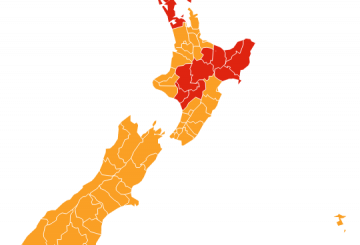2020 年,新西兰和中国都对 Covid-19 采取强硬立场,旨在根除该病毒。该战略对这两个国家都有效,在 2020 年下半年和 2021 年初,只有有限的孤立疫情。
这两个国家都受益于它们移交这种病毒,其经济增长比世界其他地区更强劲,对其公民的干扰有限。
在这两种情况下,新西兰和中国向其他正在与疫情斗争的国家提供了支持,分别向太平洋岛屿和非洲派遣医疗专业人员和疫苗。
2021 年中期,Covid-19 的三角洲变体传播到世界各地,中国和新西兰再次经历了疫情。两国政府迅速而坚定地采取行动。
中国疫情始于南京,并蔓延到 15 个省。新西兰始于奥克兰,并传播到惠灵顿。在处理疫情期间,中国和新西兰都打破了各自国家的 Covid-19 测试和疫苗接种记录。
中国开展了疫苗接种运动,其 60% 以上的人口已经完全接种了疫苗。
根据中国国家卫生委员会(NHC)的数据,本周早些时候,中国报告说,自 7 月以来,今天没有新的本地传播的 COVID-19 病例,因为当局加倍削减了该国严格的零 COVID 方法。尽管新西兰仍在看到新病例,但预测本周新病例数量将下降,并在未来两周内继续减少。
如果中国和新西兰的趋势继续下去,它们将成为首批控制三角洲大规模疫情的两个国家。






























































